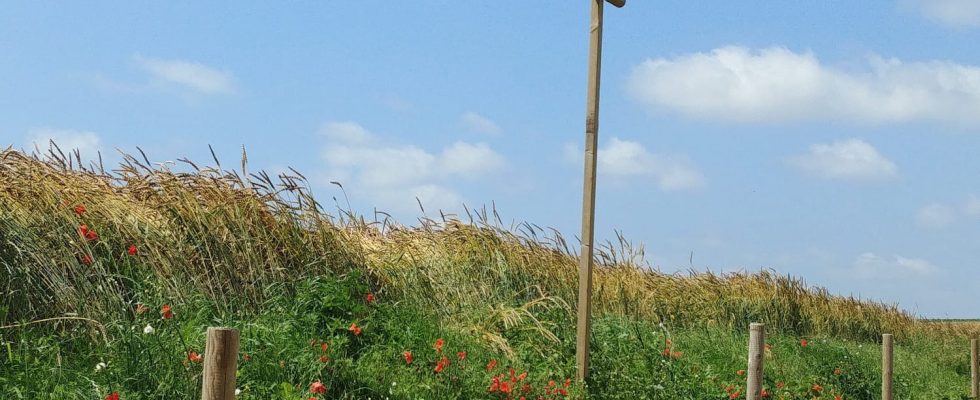Anyone who has ever traveled the French countryside has probably already encountered one or two. Neither an electric pole nor a fence, this large T-shaped wooden post has a very particular function…
Walking or driving along the side of a road in the countryside almost always offers a superb spectacle. Among the elements of the decor, many will notice the reliefs, the colors and, with luck, some wild animals. Some will also dwell on details which can sometimes be surprising. This is the case for these large T-shaped posts that are often found in the middle of fields, planted near a fence, or even attached directly to it.
These simple structures can remind you of crosses or old abandoned electrical poles in the middle of nowhere. But each time, one thing will strike the observer: the height of the whole, which can reach up to 2.50 m or more, in an often very flat landscape.
These posts, mounted in an artisanal manner, have a very specific purpose. They are installed there by farmers to accommodate birds of prey. A function that their perch-shaped profile betrays. If birds are often the enemies of farmers, these posts are the opposite of a scarecrow. Unlike birds with a devouring appetite for certain fruits, birds of prey are indeed welcome at the edge of crops, because they eat meat.
Making the edge of fields pleasant for them is therefore very clever: raptors tend to attack small rodents which swarm in cultivated fields and ravage seeds, fruits, leaves, stems and even roots or disturb crops by digging deep galleries In the ground. A behavior that can cause serious damage to agricultural production. Inviting birds of prey into plots has another virtue: it is a perfect alternative to rat poison and other specific chemical pesticides.
The more numerous and diverse they are (in terms of seasons, food preferences, hunting techniques), the higher the chances that “biocontrol” will work. The most effective will be the common buzzard, the common kestrel, the long-eared owl and the barn owl. Black and royal kites, harriers, tawny owls and owls also participate in regulation. However, many of these birds of prey hunt from an elevated position from which they drop down on their prey. Flight hunting is also possible, but quickly proves exhausting for raptors in such large plots. The perches will allow them to rest and observe the ground with a 360° hunting horizon.
The main targets are mole rats, large voles or meadow voles. But field mice are also targeted, which makes this solution an alternative for private gardens as well. Especially since these animals have a very short and very fertile reproductive cycle, with a very rapid gestation and 5 litters on average per year. All with reproduction peaks every 2 to 5 years that predation by raptors helps to regulate.
